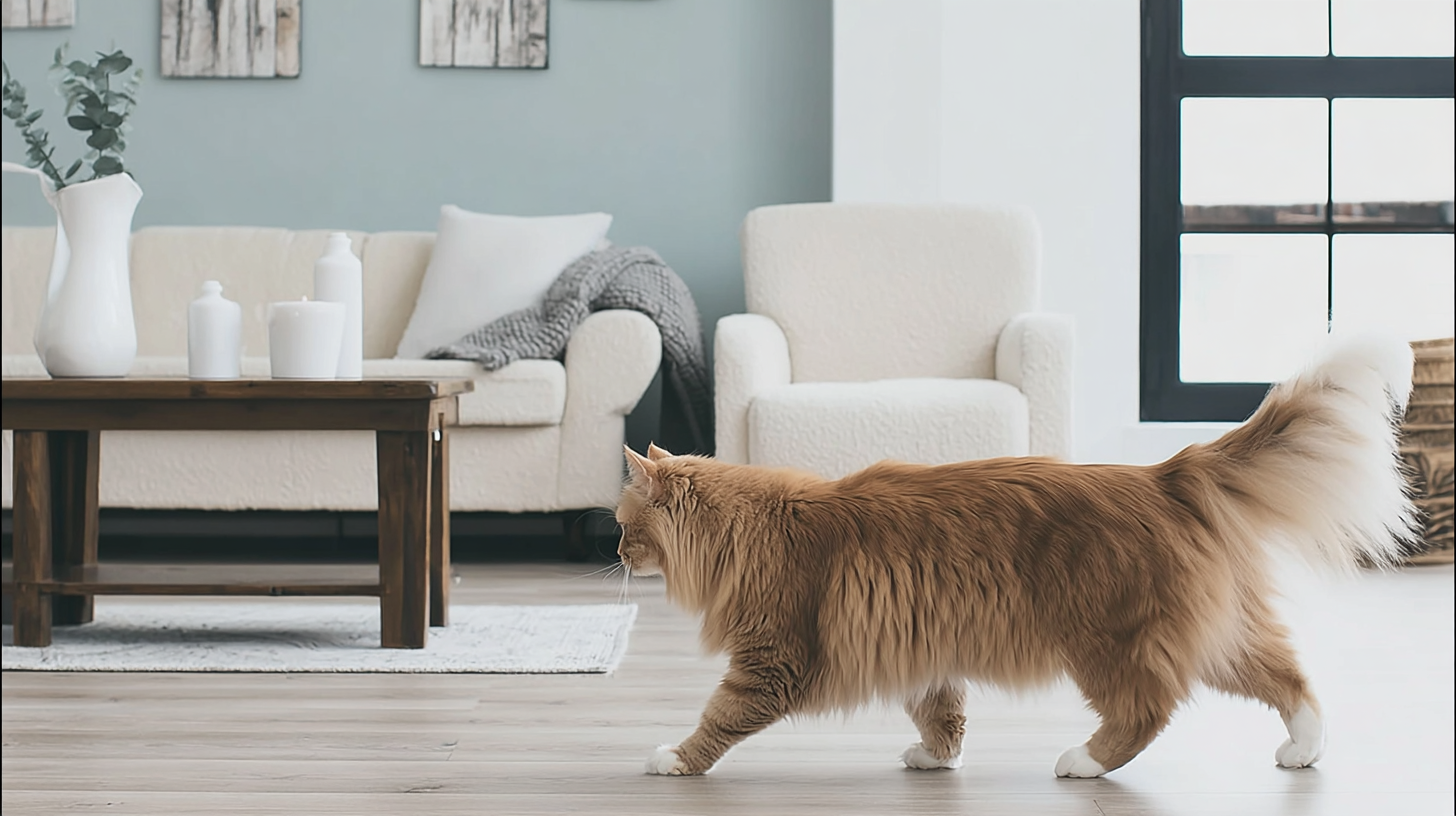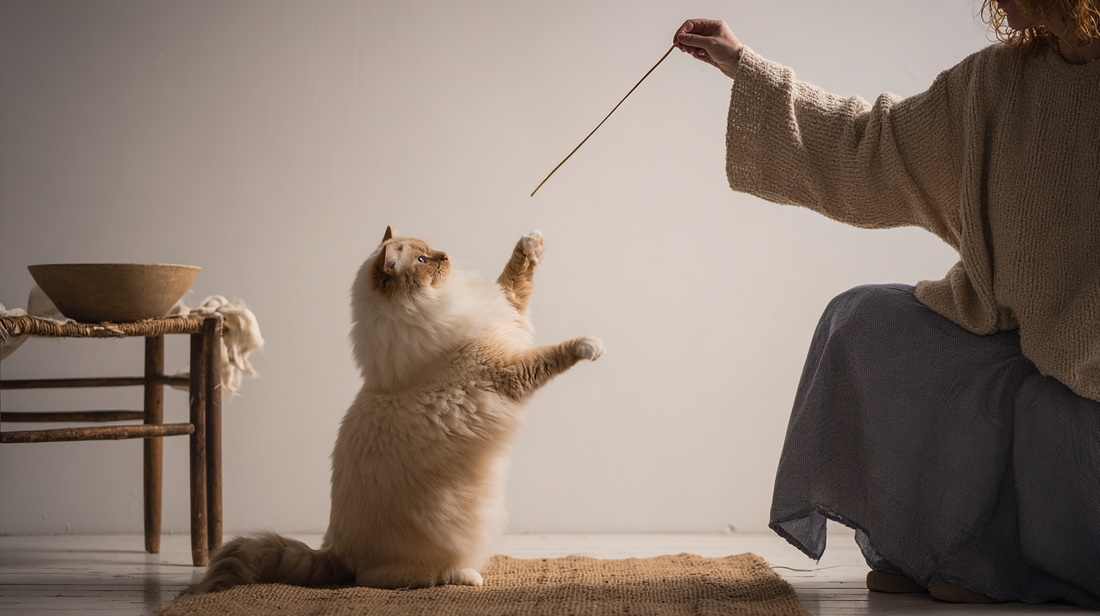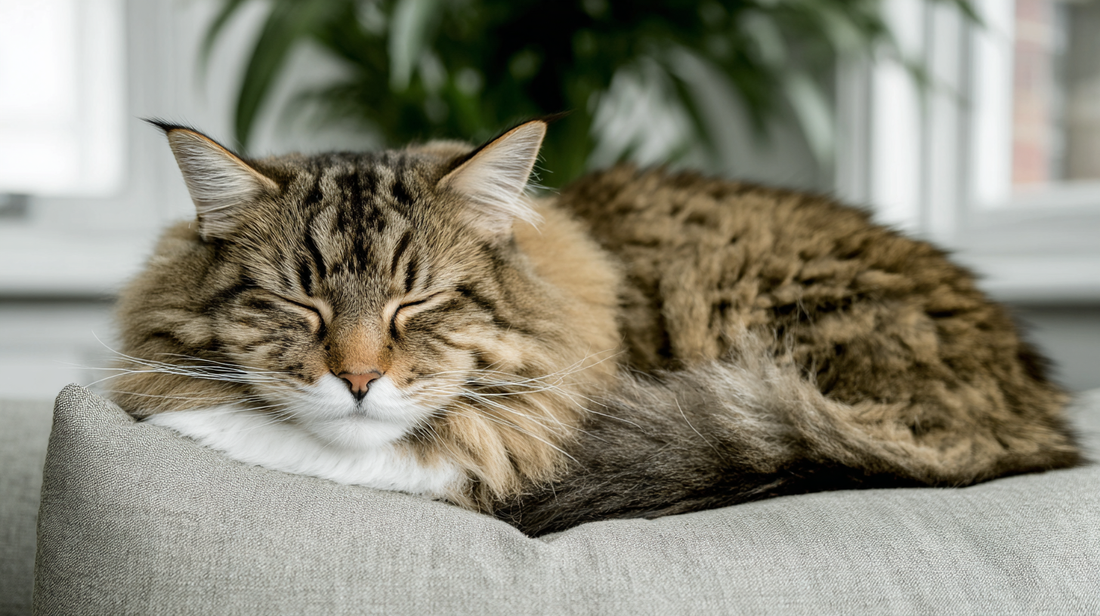Discovering that your beloved feline friend has urinated outside their litter box can be incredibly frustrating, transforming your peaceful home into a source of stress while raising genuine concerns about your cat’s well-being. If you’re asking yourself “why does my cat pee everywhere,” you’re certainly not alone—this challenge affects countless cat owners every day. Peeing everywhere is a common sign of inappropriate urination in cats, often caused by medical, behavioral, or environmental issues. If your cat is peeing everywhere, it’s important to consult a veterinarian to rule out health problems such as urinary tract infections or other medical conditions. However, I need you to understand something crucial: when your cat exhibits this behavior, they’re never acting out of spite or defiance. Instead, your cat is sending you a clear signal that something simply isn’t right in their world, which could include medical reasons that require prompt attention. As an experienced veterinarian, I’m here to help you decode this behavior and guide you toward solutions that will restore harmony to both your home and your relationship with your cat.
Summary
Understanding the two types of inappropriate elimination
Why does my cat pee everywhere? Identifying spraying vs. inappropriate urination
Your first step in addressing why your cat pees everywhere is understanding exactly what type of behavior you’re witnessing. There’s a significant difference between urine spraying (or marking) and inappropriate urination, and recognizing this distinction is absolutely vital for determining the right treatment approach.
When your cat is spraying, you’ll typically see them stand upright, backing up to a vertical surface like a wall or piece of furniture, then release a small stream of urine. You might notice their tail quivering, and they’ll appear quite focused during the act. This behavior serves as communication—your cat is marking territory with scent signals to other cats. Spraying is a form of territorial marking, often triggered by stress, changes in the environment, or the presence of other animals. Think of it as your cat’s way of feeling secure and establishing their place in their environment.
Inappropriate urination appears more like normal urination but occurs outside the litter box. You’ll see your cat squat on horizontal surfaces such as carpets, beds, or laundry, typically releasing much larger volumes of urine. Not all inappropriate urination is caused by medical problems; sometimes, it results from behavioral issues such as stress or changes in routine. I encourage you to observe your cat’s posture during these incidents—it’s incredibly helpful information. If you can safely do so, video recordings can provide invaluable details that will help me better understand what’s happening and guide the necessary diagnostic tests.

Medical causes: The critical first step in diagnosis
Why health issues must be ruled out first
Before we even consider behavioral reasons, I cannot stress enough how absolutely essential it is to rule out underlying medical conditions that could be causing your cat to urinate outside the litter box. Many times, what appears to be a behavioral problem is actually your cat’s way of telling you about a hidden physical ailment. If your cat is suddenly peeing outside the litter box or showing any abrupt changes in urination habits, this can be a sign of a serious health issue that requires prompt attention. Since cats are masters at hiding pain and discomfort, these behavioral changes might be the only clue you’ll receive that something is wrong. In some cases, urinary issues can escalate quickly and become a medical emergency, so immediate veterinary intervention is crucial to prevent life-threatening complications.
Essential veterinary examinations
When you bring your cat to see your vet, a thorough veterinary examination will include a physical examination that helps your vet identify any obvious abnormalities. A thorough examination is essential for diagnosing the underlying cause of inappropriate urination. Your vet also performs urinalysis, which checks for urinary tract infections (UTIs), inflammation, or crystals. Testing your cat's urine for blood or other abnormalities is crucial, as blood in the cat's urine can indicate conditions like cystitis or infections—and I want you to know that UTIs are particularly common in older cats. Blood tests are also an important part of the diagnostic process, helping to identify underlying medical conditions such as kidney disease or hyperthyroidism. Finally, diagnostic imaging through X-rays or ultrasound will reveal bladder stones (urolithiasis), which can cause significant pain and dangerous blockages.
Common medical conditions behind inappropriate urination
One of the most common medical culprits I encounter is Feline Idiopathic Cystitis (FIC), also known as Feline Lower Urinary Tract Disease (FLUTD). This condition causes bladder inflammation without a clear infectious cause, and it’s often linked to stress in your cat’s environment. You might notice it manifesting as increased urination frequency, straining, or urinating outside the litter box. Cats with FLUTD experience chronic pain, which leads them to associate their litter box with discomfort—creating a cycle that’s difficult to break. Bacterial overgrowth in the urinary tract can also contribute to inflammation, urinary problems, and may lead to recurrent infections or bladder stones.
Other medical conditions that contribute to urination changes include kidney disease (which causes increased urine production), diabetes mellitus (characterized by excessive thirst and urination), and orthopedic pain that makes accessing the litter box physically difficult for your cat. Chronic kidney disease is another common cause, often presenting with increased urination and thirst, and early detection is crucial for management. Liver disease is also a systemic health issue that can result in changes in urination. Male cats are particularly at risk for urinary issues, including urinary obstructions and FLUTD, and may experience more serious complications than females.
If your cat develops crystals in their urine, a diet change may be necessary to control the crystal formation. A special diet can help dissolve smaller bladder stones and prevent further urinary issues. Bladder stones can also lead to urinary obstruction, which is a critical and potentially life-threatening emergency if left untreated.

Why does my cat pee everywhere? Understanding behavioral factors
The stress bank account concept
Once we’ve ruled out medical causes, you vet help examining the behavioral factors at play. Your cat is a highly sensitive creature, and even seemingly minor environmental imbalances can cause stress, leading to inappropriate urination or spraying. Cats are sensitive creatures, which means they are especially emotionally reactive to changes in their environment. I want you to think of your cat’s relationship with their home life like a “bank account”: negative experiences become “withdrawals,” while positive experiences serve as “deposits.” When there are too many withdrawals, your cat’s stress levels will skyrocket.
Optimizing litter box setup
The litter box setup is often the primary factor in inappropriate elimination that I see in my practice. Your cat is a naturally fastidious animal, highly sensitive to their toilet facilities. Understanding your cat's preferences is crucial for successful litter box use. Let me walk you through the key considerations: You need to ensure you have the right number of boxes—one litter box per cat in your household, plus one extra, strategically placed throughout your home. In multi-cat households, having enough litter boxes is essential to prevent accidents and reduce stress.
Location matters tremendously; you should choose quiet, safe, easily accessible areas away from high-traffic zones, noisy appliances, or places where your cat might feel trapped. Avoid placing litter boxes near loud noises, as these environmental stressors can make your cat anxious and less likely to use the box. Your cat will have strong preferences regarding type and size. Many cats have specific litter box preferences, including personal comfort, privacy, and sensitivity to noise or scent. Some cats dislike covered boxes because they feel cramped or uneasy in enclosed spaces. Providing a variety of litter boxes can help you determine what your cat prefers, and observing your cat can help you identify the box style and litter that best suits their needs.
Cleanliness is absolutely paramount—you must scoop at least once daily, preferably twice. Maintaining optimal litter box conditions is necessary for your cat's comfort and hygiene. A dirty litter box can lead to avoidance and inappropriate elimination. Complete litter changes with thorough box washing should occur monthly for scoopable litter, weekly for non-clumping types.
Finally, pay attention to the substrate; sudden litter type changes can deter your cat from using the box, so you should maintain consistency with your cat’s established preferences. The type of cat litter you choose can significantly impact your cat's willingness to use the box, so consider trial and error to find the best option.

Environmental enrichment and stress management
Your cat’s emotional well-being connects directly to their environment and daily interactions. In multi-cat households, relationships between cats can become major stressors, so you need to ensure separate resources (food bowls, water, resting spots, scratching posts) to reduce competition. When you have multiple cats, it is important to address challenges like territorial behavior and cleanliness to maintain harmony and prevent issues. Routine changes significantly impact your cat since they thrive on predictability—recent moves, new pets, new people, or schedule changes can be deeply upsetting. The introduction of a new pet can increase stress and may lead to changes in urination habits.
Your owner interactions and consistent, positive engagement matter more than you might realize. Your demeanor should remain friendly and caring to foster collaboration with your cat. Enrichment becomes especially crucial for indoor cats, who need adequate mental and physical stimulation. Creating a stress-free cat's environment with toys, scratchers, and vertical spaces is essential for their well-being. Enrichment not only reduces stress but also improves your cat's quality of life. You should provide opportunities for play, climbing (cat trees), scratching (both horizontal and vertical surfaces), and predatory behaviors (puzzle feeders).
Understanding feline body language will help you identify stress cues (flattened ears, dilated pupils, stiff posture, excessive vocalization) before problems escalate into elimination issues. Additionally, pheromone therapy using synthetic feline pheromone diffusers can effectively reduce stress and anxiety in your home environment. These strategies help prevent inappropriate urination by addressing the root causes of stress.

Working with your veterinary team
Building a collaborative partnership
Managing inappropriate elimination can feel complex and time-consuming, often leaving you frustrated and wondering if you'll ever find a solution. This is precisely when a strong partnership with your veterinary team becomes essential for successfully navigating these challenges.
When you visit the clinic, the vet will listen to your concerns because they genuinely understand your frustrations and deeply value your observations as pivotal information. They should explain clearly using accessible language, carefully avoiding medical jargon, to help you understand diagnoses and treatment options. Your veterinary team will provide tailored plans because every cat and household is unique, creating individualized strategies that consider your specific situation, available resources, and your ability to implement the necessary changes. Finally, your vet should support your commitment by recognizing the profound bond you share with your pet and empowering you with both knowledge and practical solutions.
Your action plan: Steps toward resolution
Immediate steps you can take
Inappropriate elimination in cats presents a real challenge, but I want you to know that it can often be successfully addressed with methodical approaches and patience. Remember, your cat is trying to communicate a genuine need to you, whether that's relief from medical pain or behavioral stress.
Observe and record by paying close attention to when, where, and how your cat eliminates, while noting their body language throughout the process—video recordings provide particularly valuable information. Schedule a veterinary visit as your crucial first step to rule out medical conditions, and come prepared to discuss your cat's health history, daily routines, and specific elimination details.
Evaluate your litter box setup by carefully considering the number, location, size, type, and cleanliness of your current arrangement, then make gradual changes to identify your cat's true preferences. Assess environmental stress by thinking honestly about recent household changes, interactions with other pets, and current enrichment opportunities available to your cat.
Most importantly, communicate openly with your veterinary team—ask questions freely, express your concerns clearly, and work together as a team to develop comprehensive solutions. By taking these deliberate steps, you're not just solving a messy problem—you're demonstrating your unwavering commitment to your cat's well-being, actively enhancing their quality of life, and strengthening the precious human-animal bond you share. Together, we can help your cat feel completely comfortable and secure in their home once more.

The information in this article is based on the following scientific publications:
- Elliott, J., & Grauer, G. (Eds.). (2006-2007). BSAVA Manual of Canine and Feline Nephrology and Urology (2nd ed.). BSAVA Publications.
- Villiers, E., & Blackwood, L. (Eds.). (2005). BSAVA Manual of Canine and Feline Clinical Pathology (2nd ed.). BSAVA Publications, Gloucester
- Horwitz, D. F., & Mills, D. S. (Eds.). (2009). BSAVA Manual of Canine and Feline Behavioural Medicine (2nd ed.). BSAVA Publications, Gloucester
- Harvey, A., & Tasker, S. (Eds.). BSAVA Manual of Feline Practice: A Foundation Manual. BSAVA Publications
- Rendle, M., & Hinde-Megarity, J. (Eds.). (2022). BSAVA Manual of Practical Veterinary Welfare (1st ed.). BSAVA Publications.
Looking for a solution? Start here
Stylla Hydration for cats
Supports optimal hydration with amino acid-based formulation
- Encourages drinking with amino acid flavour enhancers
- Supports urinary health through increased water intake
- Promotes kidney function with specialised ingredients
Made in Switzerland with strict quality standards





